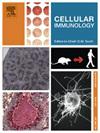Lupeol mitigates spinal cord injury by modulating microglial M1/M2 polarization via Na+/K+-ATPase-mediated mitophagy
IF 3.7
4区 医学
Q2 CELL BIOLOGY
引用次数: 0
Abstract
Spinal cord injury (SCI) often results in severe disability or even death, with inflammation playing a critical role in hindering recovery. Although Lupeol is known for its potent anti-inflammatory properties, its specific role in SCI-induced inflammation remains underexplored. In this study, an in vitro inflammation model was established using LPS-stimulated BV2 microglia. Lupeol treatment effectively counteracted LPS-induced reductions in Na+/K+-ATPase (NKA) activity, suppression of mitophagy, M1 polarization of microglia, release of inflammatory factors, and increased pyroptosis. Mechanistically, Lupeol alleviated microglial inflammation by enhancing mitophagy through the activation of NKA activity. Furthermore, Lupeol upregulated NKA activity and mitophagy by activating the AMPKα2-mTOR-TFEB pathway. In vivo, a mouse model of SCI was established, and Lupeol was administered daily via intraperitoneal injection. Lupeol treatment significantly reduced neuronal loss, promoted microglial polarization from the M1 to the M2 phenotype, attenuated inflammation, and improved motor function recovery in SCI mice. In conclusion, Lupeol promotes mitophagy by enhancing NKA activity via the AMPK–mTOR–TFEB pathway, thereby suppressing the pro-inflammatory phenotype of microglia and mitigating SCI progression.
lupel通过Na+/K+- atp酶介导的线粒体自噬调节小胶质细胞M1/M2极化,从而减轻脊髓损伤
脊髓损伤(SCI)往往导致严重残疾甚至死亡,炎症是阻碍康复的关键因素。尽管Lupeol以其有效的抗炎特性而闻名,但其在sci诱导炎症中的具体作用仍未得到充分研究。本研究采用lps刺激BV2小胶质细胞建立体外炎症模型。lupedol治疗有效地抵消了lps诱导的Na+/K+- atp酶(NKA)活性降低、线粒体自噬抑制、小胶质细胞M1极化、炎症因子释放和焦亡增加。从机制上讲,lupel通过激活NKA活性来增强线粒体自噬,从而减轻小胶质细胞炎症。此外,Lupeol通过激活AMPKα2-mTOR-TFEB途径上调NKA活性和线粒体自噬。在体内,建立小鼠脊髓损伤模型,每日通过腹腔注射给药。Lupeol治疗显著减少了脊髓损伤小鼠的神经元丢失,促进了小胶质细胞从M1到M2表型的极化,减轻了炎症,改善了运动功能的恢复。综上所述,Lupeol通过AMPK-mTOR-TFEB通路增强NKA活性,从而促进线粒体自噬,从而抑制小胶质细胞的促炎表型,减缓SCI进展。
本文章由计算机程序翻译,如有差异,请以英文原文为准。
求助全文
约1分钟内获得全文
求助全文
来源期刊

Cellular immunology
生物-免疫学
CiteScore
8.20
自引率
2.30%
发文量
102
审稿时长
30 days
期刊介绍:
Cellular Immunology publishes original investigations concerned with the immunological activities of cells in experimental or clinical situations. The scope of the journal encompasses the broad area of in vitro and in vivo studies of cellular immune responses. Purely clinical descriptive studies are not considered.
Research Areas include:
• Antigen receptor sites
• Autoimmunity
• Delayed-type hypersensitivity or cellular immunity
• Immunologic deficiency states and their reconstitution
• Immunologic surveillance and tumor immunity
• Immunomodulation
• Immunotherapy
• Lymphokines and cytokines
• Nonantibody immunity
• Parasite immunology
• Resistance to intracellular microbial and viral infection
• Thymus and lymphocyte immunobiology
• Transplantation immunology
• Tumor immunity.
 求助内容:
求助内容: 应助结果提醒方式:
应助结果提醒方式:


